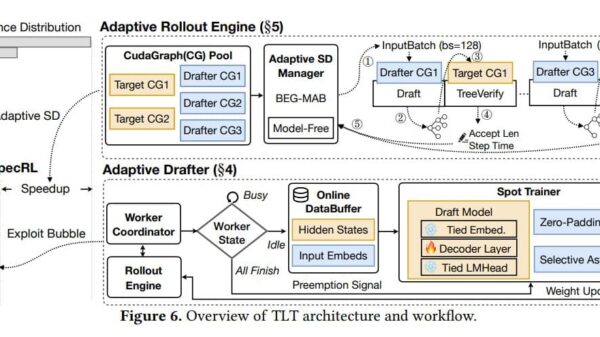Strategic artificial intelligence efforts are proving to be far more effective than tactical deployments, a sentiment echoed in a recent essay by noted AI and analytics expert Tom Davenport. He references a much-discussed study from MIT, which revealed that many generative AI initiatives fail due to a lack of strategic focus. Davenport states, “Its primary finding is that tactical, individual-level, broad-and-shallow implementations of generative AI don’t provide substantial value to the companies that employ them.” Instead, he argues that enterprise-level, deep-and-narrow generative AI projects that align with a company’s business strategy often yield measurable value.
Companies that perceive AI as a transformative force rather than merely a tool for productivity gains are the ones witnessing significant success. This distinction raises the question of what constitutes a “strategic” AI approach, a point discussed by Sangeet Paul Choudary, founder of Platform Thinking Labs and author of Platform Revolution and Reshuffle, during an interview on Michael Krigsman‘s CXOTalk program. Choudary suggests that when executives state, “We need an AI strategy,” what they often mean is, “We want to figure out what we should do with AI.” This mindset confines them to merely integrating AI to improve existing processes without considering broader strategic implications.
Understanding Strategic AI
Choudary emphasizes that strategy is fundamentally about answering two questions: “Where do we play? How do we win?” To illustrate the transformative power of technology, he draws a parallel with the impact of shipping containers when they revolutionized the logistics industry. Initially, the introduction of containers was seen merely as an opportunity for automation, simplifying the movement of cargo in and out of ships. However, the broader implications were far-reaching, leading to a reimagining of global supply chains and manufacturing processes.
“When the shipping container was introduced, its first-order effects were seen as automation,” Choudary explains. “But what happened next was that trucks, trains, and ships agreed on a common standard for the shipping container, and that totally unlocked logistics at a global scale.” This led to new forms of competition and business models, as manufacturers could now rely on a standardized shipping system, fundamentally altering their operational strategies.
In the context of AI, Choudary notes that the costs of performing various forms of knowledge work are dramatically decreasing. For instance, the once-high costs of document translation have collapsed within just a few years. “The assumptions on which your business is structured fundamentally change,” he states. “With that, you have to reimagine your business, you have to reimagine what kind of competition will come, and you have to reimagine what’s the basis of advantage.”
Recommendations for Strategic AI Implementation
To effectively harness the potential of AI, Davenport offers several recommendations for organizations:
- Understand the differences between strategic versus tactical AI. A strategic approach integrates AI into an organization’s overall market strategy, often requiring major changes to business processes and capabilities. In contrast, tactical AI projects yield easier, incremental changes with limited management deliberation.
- Corporate culture and leadership mindset are crucial. The choice between strategic and tactical projects often depends on the management and financial situations within a company. Key factors include whether senior leaders are aware of AI’s potential and whether there is a clear strategic intent for AI that is communicated across the organization.
- Begin with tactical projects if necessary. Companies not ready for strategic AI should undertake tactical projects while considering how they might fit into a broader strategic picture.
- Identify key levers for achieving AI value. These levers may include changes in business strategy, leadership, corporate culture, AI talent, organizational structure, and technological capabilities.
- Engage with all levels of the business. Conducting workshops or sessions can facilitate greater buy-in from both managers and employees.
- Monitor and measure outcomes. Strategic returns should focus on business transformation, not just incremental savings. Understanding that deep organizational changes take time is essential for long-term success.
As businesses move forward in their AI initiatives, recognizing the distinction between strategic and tactical approaches will be vital for unlocking AI’s full potential and driving transformative change.
 OpenAI Academy Launches Nationwide AI Training for 1,000 Small Business Owners
OpenAI Academy Launches Nationwide AI Training for 1,000 Small Business Owners Malta to Launch Study on AI’s Impact on Labour Market Amid Rapid Economic Changes
Malta to Launch Study on AI’s Impact on Labour Market Amid Rapid Economic Changes Palo Alto Networks’ $3.35B Chronosphere Deal and AI Innovations Position It for Quantum Cybersecurity Leadership
Palo Alto Networks’ $3.35B Chronosphere Deal and AI Innovations Position It for Quantum Cybersecurity Leadership GeekStake Launches AI-Driven Market Stability Feature to Enhance Staking Resilience During Volatility
GeekStake Launches AI-Driven Market Stability Feature to Enhance Staking Resilience During Volatility Theologian Urges Catholic Bishops to Address AI’s Ethical Risks and False Comforts
Theologian Urges Catholic Bishops to Address AI’s Ethical Risks and False Comforts









































































